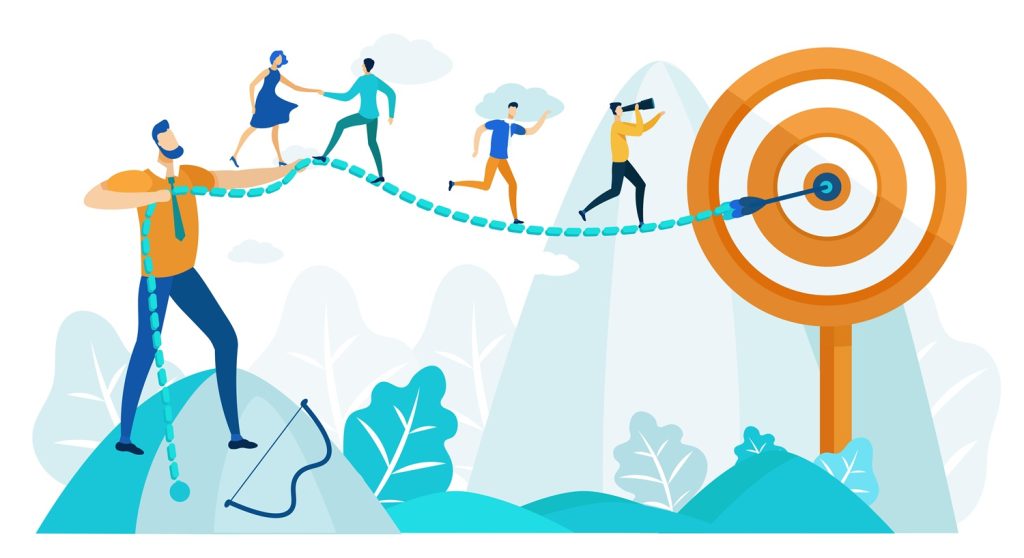
In the pursuit of client centric business growth, endurance epitomizes the unwavering commitment to consistently deliver value despite challenges. It embodies the relentless dedication to serve clients, adapting and evolving with their needs. Endurance transforms adversity into opportunity, fostering trust and loyalty. It is about maintaining a steadfast mindset, consistently putting in efforts, and demonstrating resilience in the face of obstacles. By enduring through trials and maintaining unwavering client focus, businesses can achieve sustained growth and forge enduring relationships that propel them to greater heights.
#nilakantasrinivasan-j #canopus-business-management-group #B2B-client-centric-growth

Expressing gratitude to clients goes beyond just a courteous gesture; it embodies the essence of strong and lasting business relationships.
A heartfelt thank you acknowledges their trust and loyalty, and reinforces the value they bring to your business. Clients feel appreciated when their contributions are recognized and thus encouraging ongoing engagement. In a world of transactions, gratitude transforms routine interactions into meaningful relationships. The trick is bringing in creative ways of expressing your gratitude.
#nilakantasrinivasan-j #canopus-business-management-group #B2B-client-centric-growth

Persistence is the cornerstone of #business #growth, particularly through client-centric approaches. By persistently prioritizing clients’ needs and continuously enhancing their experiences, businesses can forge strong, lasting relationships. This dedicated focus on client satisfaction leads to loyalty, repeat business, and positive referrals. Adopting a #client-centric mindset means consistently innovating and adapting based on client feedback. This resilience in maintaining high standards of service ensures businesses remain competitive and relevant. Ultimately, persistent efforts to understand and meet client needs pave the way for sustainable growth and long-term success.
#nilakantasrinivasan-j #canopus-business-management-group #B2B-client-centric-growth

Prioritizing the client’s needs ensures that every interaction is meaningful and impactful. By deeply understanding their preferences and challenges, businesses can tailor their services to create unparalleled experiences. This is truly the spirit of client-centric approach that fosters loyalty and trust. In a world where choice is abundant, being genuinely client-focused sets a company apart, making every engagement significant and memorable.
#nilakantasrinivasan-j #canopus-business-management-group #B2B-client-centric-growth

When we promise something to a client and we are still working on it, because it has taken more time than estimated, we feel that we’re so close the completely and submitting it, so let’s stretch, speed up and hand over the perfect deliverable even if it takes a little more time.
The perspective we need to gain is the possible emotions the client is going thro when it’s delayed and there’s no update from us.
Proactively letting them know there’s a small delay will in fact build more trust in Client Centricity
#nilakantasrinivasan-j #canopus-business-management-group #B2B-client-centric-growth #ClientCentricity

In the realm of handling clients in #B2B businesses like #manufacturing, #Industrial, #IT, #ITES, Tech, Telecom & other services, a vital lesson emerges from the transient nature of all things like deliveries, orders, escalations, daily interactions and heated moments. This “Client Centricity: Transient lesson” underscores the importance of cherishing prosperous moments and relishing them to the utmost with your colleagues and your clients. A true #clientcentric journey in B2B is about making it a practice to commemorate the small successes of your organization and your clients’ (though you may not be part of it). Simultaneously, during the challenging phases, it’s crucial to remind yourself that difficulties are not perpetual. Just as clouds eventually yield to the sun’s radiance, adversities too shall pass. But at the end of it, your relationship with your client will be stronger. So nurture patience and maintain faith in the process, knowing that brighter days are on the horizon.
#nilakantasrinivasan-j #canopus-business-management-group #B2B-client-centric-growth

Your circle of influence is important in client centricity.
Begin by observing your circle of influence. Within every #B2B environment, there’s a group that leans towards skepticism, where those skeptical voices converge to discuss challenges. Avoid joining that circle. Pessimism spreads rapidly, and before you know it, setbacks and obstacles may start appearing commonplace. Internalizing this mindset could hinder your path to a brighter future. Opt instead to invest your time with individuals who possess the capability to guide you back towards your #customer-centric journey.
#nilakantasrinivasan-j #canopus-business-management-group #B2B-client-centric-growth
Background:
A leading group company involved in Engg and Enterprise Solutions for manufacturing sector to group companies & 3rd parties wants to increase sales win rates, C-sat with better targeting and skills and thus improving its client centricity
Condition:
- Projects with few group companies had frequent escalations.
- Most external projects had budget and time overrun.
- Client satisfaction scores were low. Sales Win Rates and projects awarded were of low value.
Big 4 Actions:
- Improved the Project Value and Win rates based on targeting the influencers instead of the decision makers.
- Customer Satisfaction Analytics to build a predictive model and key drivers
- Coaching of Delivery Managers and Project Managers on handling client reviews, communication and relationship management (influencing framework)
- Review of internal project management process and fix internal measures, risk assessment, resource management and client dashboards
Background:
A leading independent terminalling company wants to achieve seamless delivery during build and operate and thus improving client centricity
Condition:
- Frequent surprises due to complex stakeholder network and client dis-satisfaction
- Budget and timeline overrun on large projects
- Lack of accountability for red-flags
Big 3 Actions:
- BD process was not formally defined. BD skills were missing and there were no timelines or deliverables
- Client experience during the Build (NPD) and Operate phases were not measured. Stakeholder management was only at Sr. Leadership level
- Clear Measures of Success for Client Journey were defined
- End to End Process was established with involvement of all internal members (200+)
- RACI for all tasks with internal SLAs was established.
Background:
An ITES arm of a big software company which works with enterprises across industries wanting to improve its client relationship
Condition:
One of their large account ($1Bn) wanted to terminate their enterprise contract due to issues with ITES services. Hence main focus was to prevent the churn by short term fix and long term actions.
Big 5 Actions:
- Based on Client Interviews, employee interview and discovery, identified 4 actions to be immediately initiated (Service quality, Analysis, Client review framework, Org structure change). Facilitated the agreement of action with clients
- Identified delight opportunities to clients by performing Horizontal/Vertical synergy studies and subsequent prioritization roadmap
Background:
A leading business services firm provides B2B telecom Solution and services in India wanting to improve responsiveness in pre-sales
Condition:
- Clients are unhappy after first month bill. Payment disputes and escalations leading to retail brand damage
- Benchmarking study identified company is far behind all competitors in RFQ or leads
Big 5 Actions:
- After gemba, interviews and process-walk-thro three broad issues came out.
- Process not capable to respond to leads and RFQs at speed
- Pre-sales process is broken
- Post feasibility study – accountability issues
- The entire End-to-End business process spanning all regional teams was re-engineered and later digitized.
- Mentoring of re-engineering project teams Leadership workshop on customer experience & client handling across the BU

Meeting Service Level Agreements (SLAs) in B2B organizations can be difficult for a variety of reasons, including:
- Complex products or services: B2B companies often offer complex products or services that require specialized knowledge or expertise to maintain or repair. This can make it difficult to meet SLAs for repair or maintenance times.
- Long sales cycles: The B2B sales cycle is often longer than the B2C sales cycle. This can lead to delays in the delivery of products or services and can make it difficult to meet SLAs.
- Limited resources: B2B companies may have limited resources to devote to meeting SLAs, such as hiring additional staff or investing in new equipment.
- Lack of standardization: Different customers may have different expectations for service and support, which can make it difficult to standardize SLAs across all customers.
- Dependence on third-party vendors: B2B companies may rely on third-party vendors to provide certain products or services, which can make it difficult to control and meet SLAs.
- Limited visibility: B2B companies may have limited visibility into the performance of their products or services after they are delivered to the customer, which can make it difficult to identify and address issues that are impacting SLA performance.
If your are looking for improving ways to meet your SLAs, please contact us
#nilakantasrinivasan-j #canopus-business-management-group #B2B-client-centric-growth #SLA
Sign-up for collaborat newsletter
